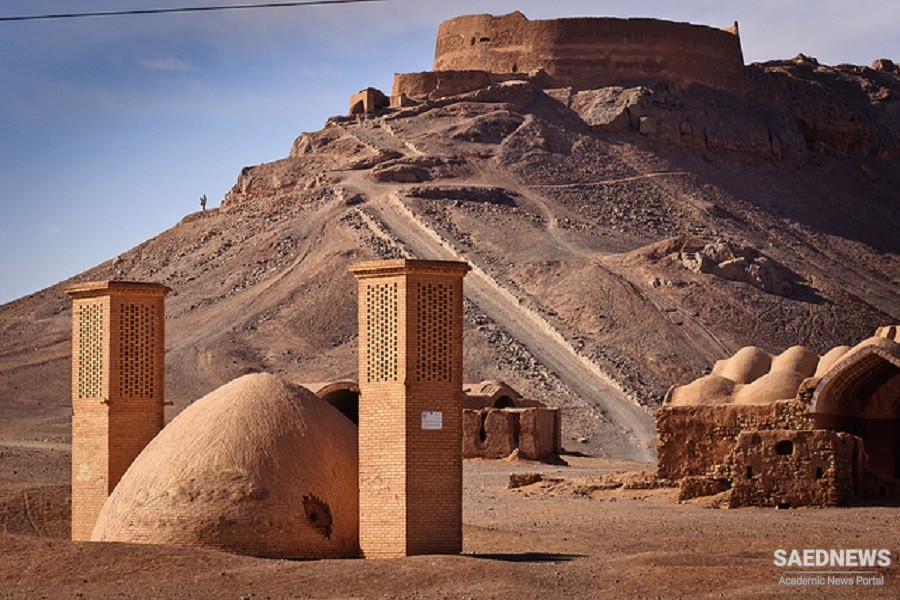The ancients knew that urine had healing properties—a bit of medical knowledge that would not be fully understood by modern science until the 18th century. Thousands of years before modern antiseptics urine could be used to cleanse a wound and prevent infection. From this it was only a short step to its being used in ritual as a purifying agent. It was followed by washing in water. In general only those who needed to be in a state of high ritual purity, such as priests, or who required cleansing after coming into contact with extreme pollution, such as death, underwent purification rituals with nirang, which is also called gomez, or taro (unconsecrated bull’s urine). It is rarely if ever used today.
At dawn on the third day after death the soul goes to meet the three judges, Mithra, Sraosha, and Rashnu. They judge the soul on its actions in life. It then passes on to the Chinvat Bridge, the Bridge of the Separator. There it meets its daena, the guide who will take it across. She represents the person’s conscience in life. If that life has been righteous daena is beautiful beyond all imagining and is accompanied by a sweet-smelling breeze. If the life has been one of ignorance and evil the guide is an ugly hag with a foul odor. The two move across the bridge. For the righteous the bridge is wide and fl at and leads into eternal joy. For the wicked it becomes narrower and narrower until it is a knife blade, and the wicked soul falls off into the pit of hell.


 The Kingdom of the Dead: Silence and Full Exposition
The Kingdom of the Dead: Silence and Full Exposition














































